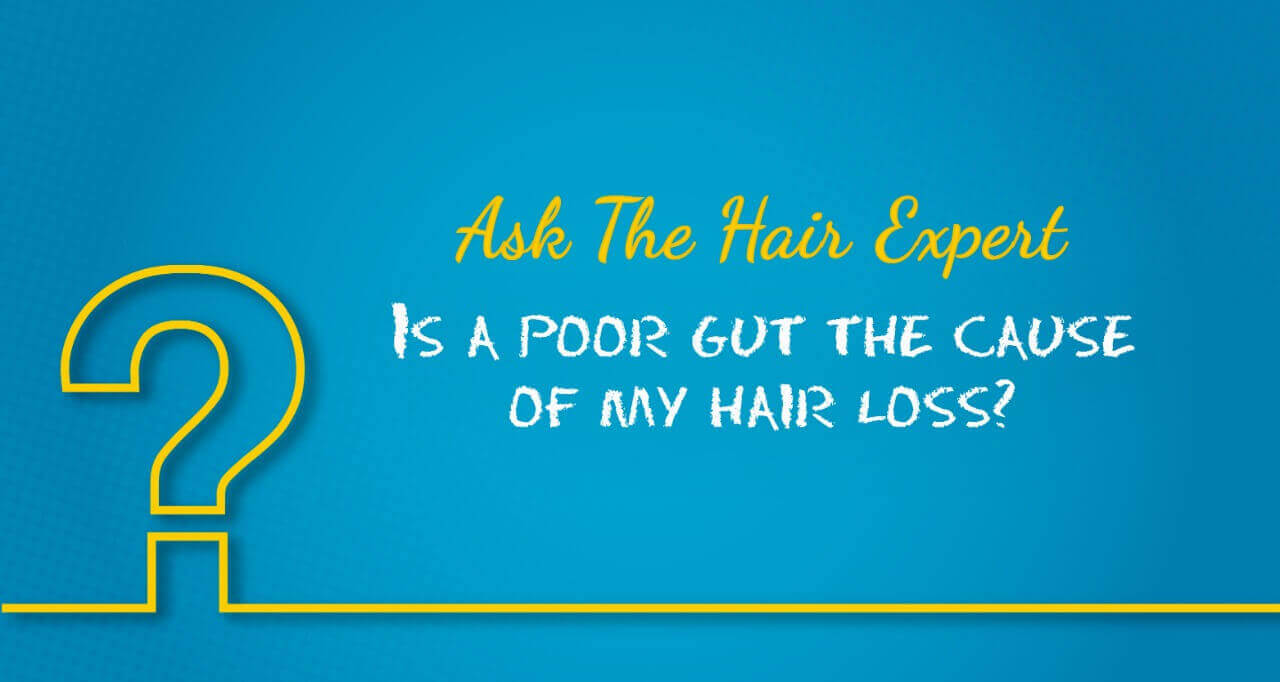“My hair has become so thin. Am having so much hair loss.”
Sounds familiar? You may have heard these words spoken by at least one person in your circle!
Now conceptually, there are finer aspects to these statements. There is Hair Thinning. Then there is Hair Loss. If you understand these aspects scientifically and deal with it in a timely manner, you can save yourself from experiencing and saying the words above!
‘Thinning hair’ and ‘losing hair’ are interchangeably used often. In almost all such conversations what is actually being referred to is the volume of hair – how much are you able to bunch and hold in your hand? This is something we have observed during conversations with our patients. Further, we have received some queries on social media about the difference between the two!
So here we are, back with our ‘Ask the Hair Expert’ series; this time to address your queries on hair thinning and hair loss, to explain the difference between the two and help you tackle your concerns right.
You asked: “Is hair thinning different from hair loss? How do I know if my hair is thinning or if am losing hair? Is reduced hair volume not the same as hair thinning? What can I do to stop my hair from thinning?”
Here’s the answer from the Hair Experts.
Hair Thinning and Hair Loss are two related but different concerns!
A Trichologist can help you understand their meaning, your hair & scalp condition and guide you best on how to keep your hair healthy.
So, let’s begin by understanding what each of these captioned terms mean. We will then discuss common causes, symptoms and what you can do to control the problem.
What is Thinning of Hair?
Thinning of hair actually refers to an earlier stage of hair loss. This is when the hair shaft, individually, starts to grow thinner and finer in diameter with each hair cycle. It is a progressive disorder that is seen in both men and women. Referred to as Male Pattern Thinning (MPT) or Female Pattern Thinning (FPT), hair thinning happens in both, but the pattern in which the hair thins (and is lost, if ignored!) is different.
In the case of MPT, the pattern is characteristically U-shaped. It starts with thinning on the crown or a receding hairline, which advances to thin the top of the head. In the case of FPT, thinning is seen in the fronto-vertex (centero-parietal) region (atop of the frontal region). The frontal hairline is spared in most cases.
When hair thinning progresses, unattended, it reaches a point where the hair shaft becomes so thin that it becomes ‘vellus’ (hair that is very light, short and superfine…invisible to the human eye even).
What about Hair loss?
When MPT or FPT is observed, and not attended to, over a period of time, it leads to permanent hair loss.
Thinning, which is referred to as Androgenic Alopecia is always irreversible and has to be distinguished from hair fall. Hair fall could be when hair sheds from its roots or hair breakage from the shaft. Hair fall is mostly reversible with a course correction.
Androgenetic/ Androgenic Alopecia is perhaps the most common form of Alopecia that affects both men and women. MPT and FPT are forms of this condition. It relates to the genetic structure and hormonal activity in the body.
Hair thinning, MPT or FPT, over a period of time, progresses, and in some may even lead to baldness.
What causes thinning of hair?
The most common and recognisable causes of hair thinning are as follows:
- Hereditary/ Genetic predisposition
- Nutritional and immune system deficiencies
- Crash dieting leading to sudden weight loss
- Emotional or physical stress
- Lack of sleep
- Unhealthy lifestyle
- Hormonal imbalance and disorders – Thyroid disorder, PCOD etc
- Ageing (esp when predisposed to balding, genetically)
- Use of anabolic steroids or other supplements to gain lean muscle mass
- Unchecked self-medication
- Prolonged use of steroids
- Use of contraceptive drugs and any gynecological ailments in women
- Certain acute illnesses like typhoid, malaria, jaundice, TB generally aggravate the problem of hair thinning leading to hair loss.
- Other underlying medical conditions…
Hair Thinning is typically caused as an effect of dihydrotestosterone (DHT). This is an androgen produced as a byproduct of testosterone. It binds the receptors in the scalp (especially in those genetically susceptible to the condition) and on the hair follicles. DHT is thought to cause hair follicles to miniaturize, and this contributes to pattern thinning. DHT blockers are hence used to treat hair thinning. While DHT is recognised as a popular culprit, the reason for hair thinning could be other conditions as well.
Hair fall as such has to do with the A/T ratio (anagen-telogen ratio) that indicates the rate of hair growth and fall on your scalp. Do read our blog on the hair growth cycle and hair anatomy to understand the concept better.
During the hair growth cycle, your hair grows thinner and falls out during the Telogen phase. New hair then gets generated and it replaces the lost hair. As you age, naturally, the rate at which new hair replaces the fallen hair slows down. When you age, each hair spends more time in the resting phase, which means you shed hair faster than the speed at which the growth is happening. It is also to be noted that hair follicles, too, decrease in size with age. They hence produce finer/thinner hair, leading to an appearance of varying degrees of baldness. This is especially the case in men.
While thinning of hair is a natural sign of ageing and need not necessarily indicate any major problem, it is good to be on the watch out.
Hormonal changes in the body as you age also impact the hair growth cycle and the duration of each of the three phases that your hair normally goes through. For instance, it is fairly common for women undergoing menopause to experience both hair thinning and hair loss. Also, while the hair on the scalp sees thinning, facial hair may become more noticeable, due to a decrease in estrogen.
It is important to point out that hair thinning is now a growing concern in the younger population thanks to erratic lifestyles, excessive styling, and improper hair care.
MPT and FPT are the most common cause of hair loss. While it typically should start when one is in the 40s, off lately we have been helping patients facing such issues even in their late 20s and early 30s!
Remember, that thinning is progressive and only when unattended it leads to permanent hair loss, something that can become irreversible. It would be prudent to watch out for the signs and address them at the earliest. Do read our blogs on hair loss in men and women, to understand this better.
Symptoms of hair thinning
Here are some of the tell-tale signs of hair thinning.
- Hair thinning all over (in women)
- Receding hairline (in men)
- Decreased density
- Scanty hair
- Decreased volume
- Wider center parting
- Loss of hair on the scalp
- Itchy, flaky scalp
- Slow or lack of hair growth
The early symptoms of MPT or FPT that can be verified by a Trichologist are
- Pattern of thinning
- Receding Hairline
- Reduced follicular count
- The distance between the hair follicle increasing
- The diameter of the hair decreasing
- Length of the hair shortening
Solutions to tackling hair thinning are aplenty now thanks to advancements in the field of trichology. You have pioneers such as RichFeel in India providing a variety of personalised solutions to handle hair thinning and hair loss. So do not hesitate to seek professional help. The sooner you intervene the better you can manage your hair’s health and life.
Tricho Treatments to combat hair thinning
Thanks to the growth of Trichology as a science, there are scientific solutions to your hair and scalp problems. Treatments and solutions are now available to tackle hair thinning, hair fall, baldness – both surgical and non-surgical solutions, instant permanent scalp covers, hair colour damage treatment and hair fibers that can camouflage your scalp in 30 seconds!
Treating thinning of hair starts with a consultation with the trichologist to identify the root cause of thinning and the level of progression. It is only after a clear diagnosis that appropriate treatment is initiated.
The treatment for Pattern Thinning is traditionally based on the principle of postponing /delaying the progress of thinning, eventually hair loss and balding.
It typically consists of two lines of treatments a) Pharmaceutical DHT blockers OR b) The use of natural DHT blockers. Most Trichologists are encouraging the use of natural DHT blocker treatment. Given the advancements in the field, there are various options available in this area.
In terms of clinical treatments, traditionally PRP (Platelet-rich Plasma) is suggested for hair thinning. It is a regenerative therapy that uses the natural growth factors that our body possesses to heal damaged tissues. In essence, it uses one’s own natural healing system. It is, however, an invasive treatment that comes with its own side effects.
Recent advancements in Trichology have seen breakthrough use to Plant Stem Cell technology to fight the signs of hair thinning. This has gradually started replacing the PRP methodology.
Plant Stem cells are a remarkable source for the continuous regeneration of the epidermis, the formation of new hair and even hair pigments. Treatments that use active plant stem cell technology work to delay ageing, reduce the hair follicle regression, induce the formation of hair follicles and increase the lifespan of hair follicles so that the hair can stay longer in the anagen phase of the hair. This not only reduces hair loss but restores hair regeneration.
The brilliant thing about hair treatments that use plant stem cell technology is that unlike PRP hair treatments, these are holistic in their approach, absolutely non-invasive and perhaps the safest way to regenerate hair growth. Do read our blog on the topic to understand such treatment better.
Half-yearly Tricho check-up
A consultation with the Trichologist can help with the right diagnosis and course of treatment/solution for you at the right time. As discussed above, hair thinning is a progressive problem. It is only when it is ignored that it leads to hair loss and eventually baldness.
Just as you have an annual health check-up or a quarterly dental clean-up, do chart a half-yearly tricho check-up in your calendar. This simple exercise can be a great game-changer for you and your hair. This would help keep track of changes that your body, as you age, is going through (and the impact of it on your hair) and help intervene in a timely manner when required. Having regular check-ups will ensure that you spot the signs of hair thinning, professionally, at the right time and curb the problem while you can.
Trust that reading this blog has clarified the difference between hair thinning and hair loss! There is indeed a distinction!
And with that, we sign off today! For more on hair & scalp concerns, and for all things ‘Hair’, do follow our blogs on hair loss, hair care, treatments & solutions, and interesting hair trivia!
Connect with us on social media on the links below. Do leave your questions & comments and we will address them all, just as we have done today!



